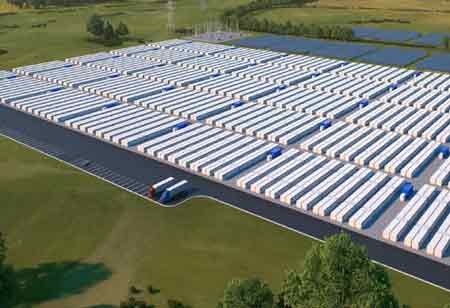Through this article, Jonathan Berry explores the complex challenges developers face when navigating mid to late-stage solar and battery storage projects in Colorado. He highlights the crucial role of securing a Conditional Use Permit (CUP), which involves addressing environmental, technical and community concerns. One of the unique obstacles in Colorado is the interdependence of CUPs and interconnection agreements, creating a bureaucratic dilemma for developers.
As solar and battery storage projects progress from concept to reality, developers face increasingly complex challenges, especially in the mid to late-stage development phases. This often focuses on critical tasks like securing permits, navigating regulatory processes and finalizing interconnection agreements. In Colorado, where local regulations play a significant role, developers must carefully manage the Conditional Use Permit (CUP) process, address community concerns and overcome supply chain delays in procuring high-voltage equipment.
This article delves into the intricacies of Colorado's permitting landscape, the challenges of securing interconnection agreements and how proactive community engagement and planning can help mitigate risks and move projects toward successful completion.
The Conditional Use Permit (CUP) Process
In Colorado, the CUP is one of the most critical steps in mid- to late-stage solar and battery storage development. Local governments require this permit to ensure that large-scale energy projects are compatible with surrounding land uses, comply with zoning regulations and align with broader community goals.
Pursuing Engineering and Procurement agreements before securing interconnection can be a game changer, allowing projects to move forward and stay on track despite equipment delays
Obtaining a CUP involves engaging with local planning commissions, county boards and sometimes residents. Developers must demonstrate that their projects will not negatively impact the environment, traffic or local infrastructure and propose mitigation measures for any potential adverse effects. This can include commitments to minimize visual impacts, reduce noise or contribute to local economic development.
However, securing a CUP often hinges on more than just environmental and technical compliance. Local authorities frequently tie the approval of a CUP to the developer’s ability to secure an interconnection agreement (IA), creating a significant roadblock in the development process.
The Interconnection Agreement Dilemma
One of the unique challenges developers face in Colorado is the requirement to have an offtake agreement in place before obtaining an interconnection agreement (IA). This differs from many other states, where developers can interconnect to the grid and sell power directly on the wholesale market. In Colorado, utilities or other entities that purchase the power (off-takers) are a prerequisite for interconnection, meaning the developer must secure a power purchase agreement (PPA) or similar contract early in the process.
This requirement presents a chicken-and-egg problem for developers. Many jurisdictions are reluctant to approve a CUP without proof of an IA, yet utilities are often unwilling to provide an IA without an approved CUP. In some cases, municipalities have made securing an IA a condition of CUP approval, adding complexity to an already lengthy process. Developers are frequently forced to negotiate with utilities and local governments to overcome this bureaucratic hurdle.
Overcoming Community Opposition: NIMBY and Public Engagement
Another significant challenge that emerges during the permitting process is opposition from residents, often referred to as the "Not In My Backyard" (NIMBY) movement. Community members may raise concerns over potential impacts such as decreased property values, altered landscapes or environmental disruption. This can delay or even derail the permitting process if not managed effectively.
The key to overcoming NIMBY opposition is proactive and transparent community engagement. Developers should involve local stakeholders early in the process, holding public meetings and listening sessions to address concerns and demonstrate the project’s benefits. By being responsive to community input and offering solutions—such as visual buffering with trees or sound barriers—developers can mitigate resistance and build local support. This is especially important in Colorado, where local control over land use is significant and community opposition can influence local governments' decision-making.
The Backlog in High-Voltage Equipment Procurement
While permitting is often the most public-facing challenge in mid to late-stage development, developers are increasingly facing another major roadblock: delays in procuring high-voltage (HV) equipment for substations. This equipment is essential for connecting solar and battery storage projects to the grid, but supply chain constraints and high demand have led to significant backlogs at Independent System Operators (ISOs).
These delays can push back a project’s Commercial Operation Date (COD), creating a cascade of challenges, from missing regulatory deadlines to jeopardizing offtake agreements. To mitigate the risk of these delays, developers should consider pursuing an Engineering and Procurement (E&P) agreement. An E&P agreement allows the project to proceed with design and procurement activities for critical infrastructure, even before a final interconnection agreement is secured. By taking this proactive step, developers can expedite timelines and reduce the risk of missing their COD.
Conclusion
Permitting remains one of Colorado's most complex and challenging aspects of mid- to late-stage solar and battery storage development. The interplay between Conditional Use Permits and interconnection agreements, community opposition and equipment procurement delays creates a multifaceted landscape that developers must navigate carefully. By engaging with local communities early, securing E&P agreements to address equipment delays and understanding the nuances of Colorado’s regulatory environment, developers can position their projects for success in this growing renewable energy market.


